by Marcela M. | May 14, 2014 | About, Blog, Blog, South America
Choosing a word for the year is a powerful thing, a life altering experience that I can only recommend.
At the beginning of 2013, I wrote a blog post about how my word for 2012 (Integrate) helped me cope with the series of curve balls that the year threw at us, how it helped me become whole again after feeling that my brain, heart and soul had been shattered. You see, 2012 was the year when Luka and Zoe were assessed for Special Needs and were found to have developmental delays requiring Speech and Occupational therapy, as well as Sensory issues. 2012 was the year when and we had to learn not only how to help them but also how to deal with our own pain and confusion in the process and how to advocate effectively for them before schools who were fearful and, thus, reluctant to adapt as recommended by the children’s therapists. (It is both an irony and a lucky event that I have a postgraduate degree in Human Rights Law).
2012 went by and made us stronger. And even though we were still very much in survival mode when 2013 arrived, I was ready to move forward from the pain and welcome a new stage in our lives. I was tired of feeling sad and, so, Forward was my word for last year, and forward I moved. Not because things were easier, but because when they were not, I was reminded by the mere whisper of my word that getting stuck in the bad was ultimately a choice: a choice I decided to reject. From old school, to new school, to homeschooling, from letting go of my old career to embracing a new one, from paralyzing fear to the courage to jump into the unknown with nothing but faith: every decision was marked by a deep desire to progress and let the past behind.
December came and I felt in me the need to release the old one, and chose another word. I knew I wanted to go one step further this time: I didn’t just want to move forward, I wanted the movement to be positive, I wanted to grow. This year, I wanted to go deeper, and put some thought into making my word a reality, and so I got Leonie Dawson’ s ” Create your Amazing Year” workbook and planner an, one cold day of January, I spent a morning at a cafe connecting to myself, dreaming and planning.
Dreaming…If you have been through a crisis of any kind you certainly know how difficult, almost impossible it seems to dream and how liberating it can be when we are finally able to do it again. When I sat down at that cafe earlier this year and started planning 2014 and dreams and hopes started coming out of me, I felt reborn.
And in that moment I knew what my word for this year had to be: Thrive

This year I want to wave a gracious goodbye to the past, without regrets or ill feelings of any kind. Forgiveness is, for that reason, a big part of my year.
This year I want to love deeply- and this includes learning to love myself, a task at which me and my inner self critic have always had a very hard time. For this reason, this year I am committing to self-care without shame or blame. I want kindness to be at the center of my relationship with me, for the first time in my life.
This year I want to prosper. For this reason, I am committed to working on my money blocks and on overcoming my scarcity mentality. I want to feel (not just know) the Universe as expansive and abundant.
This year I want to learn new things and to share what I learn.
This year, I want to flourish and help others do the same.
Why am I telling you this in May? Because I will turn 38 years old in 17 days. Because any day is a good day to start living with intention. Because it’s never too late to dream again.
What are YOUR dreams for 2014? What are you hoping to leave behind and what are you hoping to embrace in the next 7 months?
Tell me in the comments below and let’s find a way, together, to make those wishes come true!
by Marcela M. | Jun 18, 2013 | Blog, Children, Europe, homeschooling, Travel
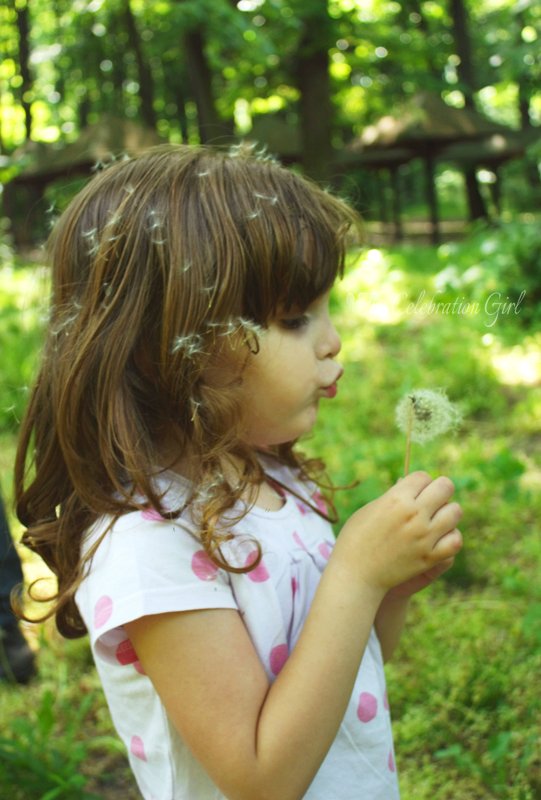
In the almost nine years that my husband and I have been together, we have visited Belgrade together many times. But visiting Belgrade with kids is always a different experience, and one that keeps changing as our children grow.
We arrived to Belgrade on the 30th of April, from Athens, Greece, in a small Fokker plane from Olympus Airlines. Ahead of us was one week of extended holiday because, due to the proximity between the 1st of May and 2013’s Orthodox Easter, most shops and Government agencies were going to remain closed or with limited working hours on the days in between the two holidays. As a consequence, the city (which is normally bustling with excitement and noise) was quite quiet and leisure-like, like a holiday spot
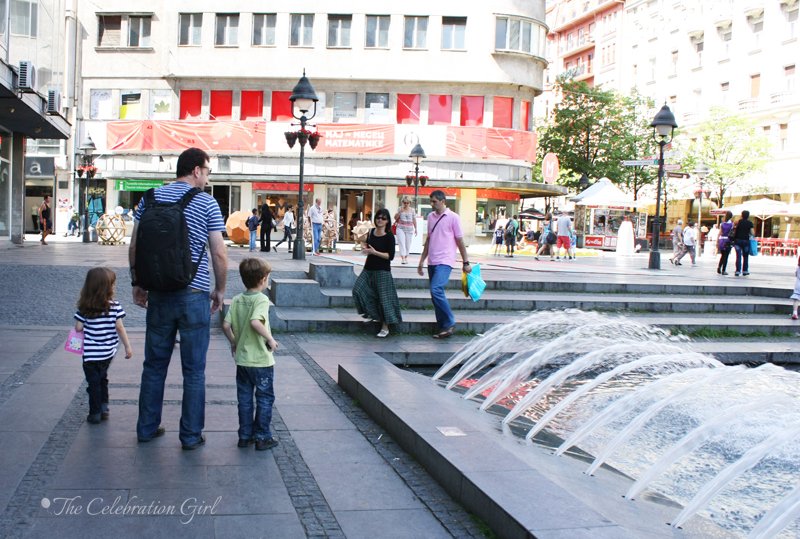
I have mentioned before that, when we travel to Belgrade, we live like locals do, go to the places where locals go and pretty much avoid touristic spots. In this trip, this meant spending the 1st of May having lunch in one of the traditional restaurants that are located in the hills that surround the city.
Going to the hills on Labor Day is an old tradition that marks the beginning of the lovely Spring weather. The tradition, in fairness, is to go for a picnic, and people start arriving and setting up their picnic and camping spots as soon as they wake up, very early in the morning. Soon, the whole place is covered and there are families, and groups of friends chatting, drinking, eating and relaxing, children playing and running all over, musicians, and even salesmen walking around selling ice cream, drinks, and children toys and balloons.
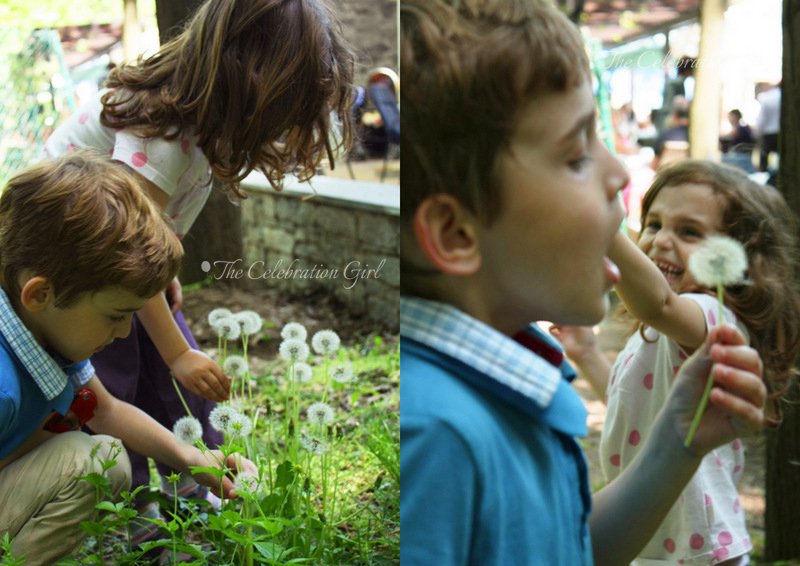
Instead of a picnic, though, this time we opted for a restaurant in the middle of the woods, that had a lovely playground for the children and a piece of land where Luka and Zoe blew dandelions in search of fairies.
When we had finished lunch and were waiting for dessert, something funny happened. A band that was at the restaurant, serenading customers with traditional Serbian music, approached our table and, realizing that I was not speaking Serbian, asked me where I was from. When I mentioned that I was from Argentina, one of them started speaking Spanish to me and they promptly starting playing La muerte del Angel, a tango by Astor Piazzola!
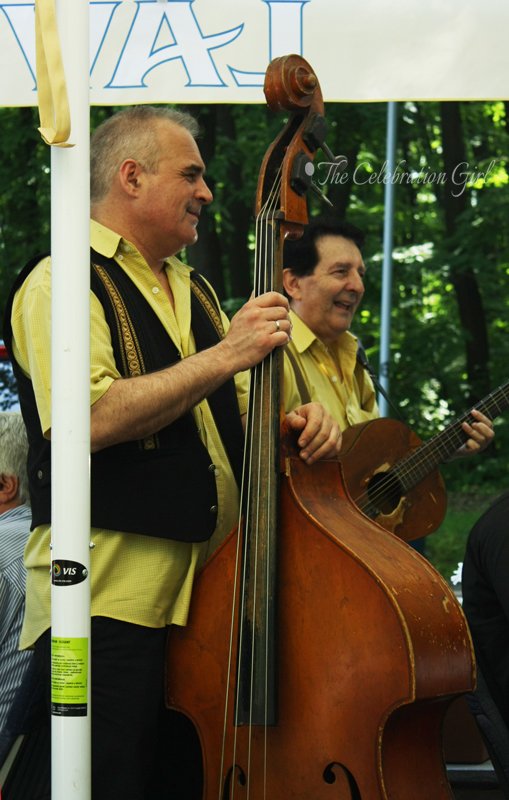
The leisurely feeling of the city influenced the rest of our days in it, as well. We strolled around the streets of downtown, especially the always beautiful Knez Mihajlova, where Luka and Zoe ran, ate ice cream and marveled at the water fountains; and where we could visit the tourist office shop to buy presents to bring back home as well as visit the wonderful math fair that was taking place all month of May.
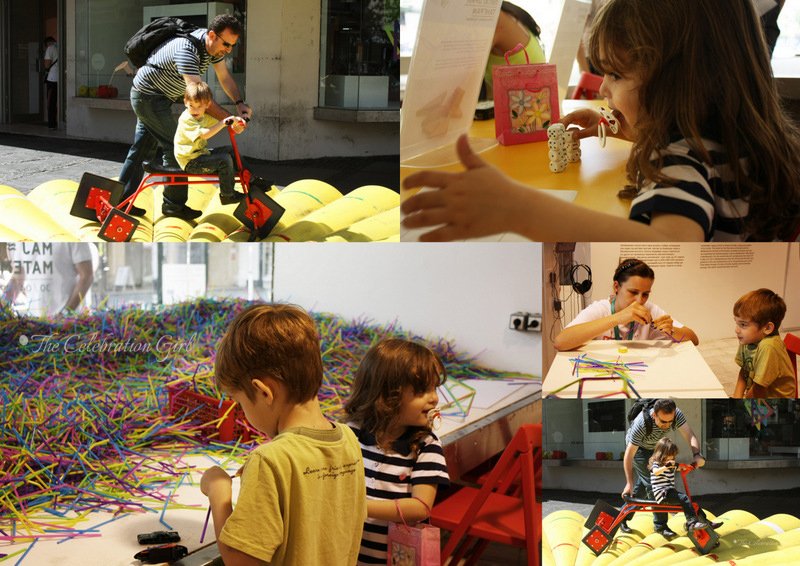
The maths fair, which was full of young volunteers willing to help, was ideal to get children excited about science. There was a bicycle with squared wheels, a floor mat for people to find their way out turning only left (we all tried it and it was hard!), several math games, pendulums, dice experiments, a 3D printer and a fantastic table with thousands of straws that children could put together to create objects, thus bringing awareness to shapes and dimensions.
The squared wheel bicycle, as you can imagine, was a real hit with Luka and Zoe 🙂
We also spent lots of time with family, which is something that, being expats, we don’t get to do often enough.
We took Luka and Zoe to amusement parks, the zoo, and open air playgrounds.
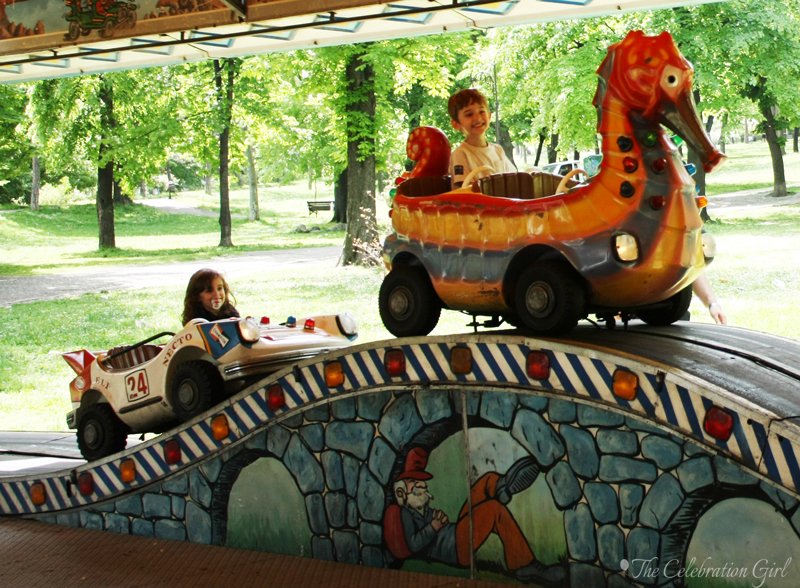
We had cake at my brother in law’s traditional sweet shop, which dates from 1936.
We strolled in the esplanade along the Savva River.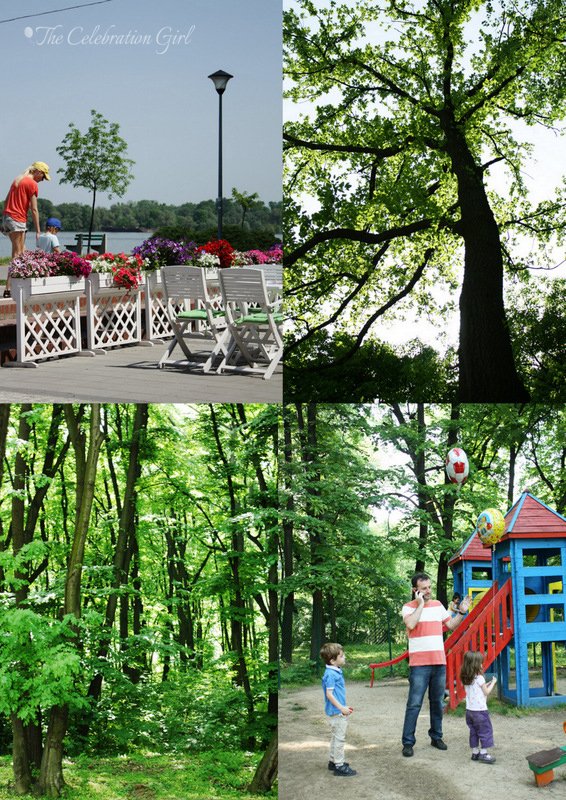
We enjoyed the slow days and the quiet nights.
We relaxed.
Then, 10 days after we arrived, it was time to say goodbye. We took a plane back to Athens, then a plane back to Cyprus and here we are now. At home.
And now, in case you are planning to visit Belgrade with kids (or with adults) I have put together a mini guide of things worth doing, worth seeing and worth eating!
Here it goes:
What to do in Belgrade with Kids
1) Visit Kalemegdan. The old city fortress is a real beauty, not only in itself but also because of the surrounding parks and the view of the Savva and Danube rivers. Lots of space for kids to run, and get excited about history. The fortress also hosts an army museum which kids love.
2) Go to the Zoo: It’s next to Kalemegdan and it’s very well kept. There are elephants, tigers, lions, penguins, seals, hippopotamus, giraffes, zebras, goats, tons of birds and much more.
3) Go to an amusement park: Also, in Kalemegdan. It’s not very big but it’s a nice stop before or after the zoo.
4) Walk around Knez Mihajlova. The most famous street in Belgrade, with its French inspired buildings, is a real beauty.
5) Have lemonade (or Boza) and cake at a traditional Poslaticarnica (or sweet shop). In Belgrade, sweet shops are where traditional cakes and pastries are sold. They are normally rather small and offer a mixture of Northern European cakes (due to the Austro-Hungarian influence) and Oriental delights, such as baklava (due to the times under Ottoman rule). Speaking about Baklava, you will find 3 different types: Greek, Turkish and Serbian (made with nuts mixed with Plazma cookies powder)
6) Try different types of bread at a Pekara (bakery). Cakes and sweets are sold in Poslasticarnicas, and Pekaras are were you can find exclusively bread. Delicious bread!
7) Rent bikes to ride around the Savva river
8) Take a boat ride on the Danube.
9) Have lunch on a “Float” (restaurants on the Savva and Danube)
10) Take a tram ride
11) Buy Plazma cookies at the supermarket. Seriously, you cannot leave without tasting the iconic Serbian cookie with the famous tagline “A house is not a home without Plazma”. And since you are at the supermarket, you may also try Domacica cookies, bananica and cedevita juice. You will look like a local 😉
12) Visit the beautiful Orthodox churches and marvel at their works of art.
13) Buy burek or cevapcice at a local fast food shop and have an improvised picnic in one of the many Belgrade parks.
14) If your kids are bigger than mine, you can go take a look at the buildings bombed by NATO during the war in Kosovo. They were not remodeled nor were they repaired, and it may be a good opportunity to discuss war and recent European history. As a former peacekeeper, I find it important to discuss war and its consequences in times of peace.
15) Taste traditional Serbian food in the beautiful restaurants or Kafana of Skadarlija street (my husband recommends Tri Sesira, Ima Dana or Dva Jelena) For ideas on what to eat, keep reading!
What to eat in a Belgrade Kafana
1) Proja, corn bread (most of the times, it contains a cheese similar to feta inside)
2) Burek: A puff pastry pie, filled with cheese (burek sa sirom) or with meat (burek sa meson). It is possible to find some varieties with Spinach and cheese as well.
3) Corba and other traditional soups. Strictly speaking, corba is soup that contains fish or beef and that is thickened with flour.
4) Sarma: Beef and rice wrapped in vine leaves and cooked for a very long time!
5) Punjene paprike: Red peppers stuffed with rice and beef.
6) Pasulji: Bean stew.
7) Cevapcice: long meat balls made with lamb, pig and beef meat.
8) Tarator: Salad very similar to Tzaziki, made with yogurt, cucumbers, garlic and parsley. Ideal for Summer and for using as a sauce over bread.
9) Ajvar: Red pepper puree.
What to eat in a Poslasticarnica
1) Northern European cakes, such as black forest, or struddel.
2) Triglav: a chocolate buttercream cone, covered in chocolate.
4) Krempita: A bomb. A very thick layer of pastry cream between two slices of puff pastry. Here is a recipe, if you want to try it at home.
5) Baklava: A classic with its own Serbian version,made with plazma cookies and nuts.
6) Kuglof: A wonderful tea cake made with dried fruits.
7) Ratluk: fruit candies,covered in sugar.
Did this post make you want to visit Belgrade? Or at least to eat some Serbian food? If so, mission accomplished 🙂
Have a lovely week, dear friends, and don’t forget to subscribe to get the mini Summer recipes ebook that I created with wonderful Claire Stone!
by Marcela M. | Jun 11, 2013 | Blog, Children, Europe, Travel

Good morning dear friends! I am beginning today the series of posts about our last family trip to Athens and Belgrade, and, since the Summer holidays are almost upon us, I will take this opportunity to share with you all my tips and tricks for travelling with children of different ages.
But first things first, so today I will tell ALL about our one day in Athens with kids!
We had always wanted to visit Athens but, for one reason or another, we had never been able to until last April. I must confess, though, that we had not originally planned to do so in this occasion and that the Universe lent us a hand for making this this micro visit finally happen. You see, whenever we travel to Belgrade, we normally use the Serbian Airline Jat, because they have a 2 1/2 hour direct flight from Larnaca and, up until this year, a schedule that suited us. But in 2013 they started flying in the middle of the night, leaving Cyprus at 2 am in the morning and, while I wouldn’t mind that too much as an adult, we believe that children are a different story. Leaving so late means disturbing our children’s sleep (they are bound to wake up during the several security check ups) and, as a consequence, having to deal with two cranky kids once in Belgrade, and risking a jet lagged sort of change in their normal waking hours, so we started looking for options. And we found them.
Two months before travelling, we booked our tickets to travel through Athens and, since we were already passing by, we decided to make a short stopover in Greece and try to see the Acropolis, at least!. We booked a family room at a nice hotel near Syntagma Square and waited happily for the date of the trip to arrive. We couldn’t wait!
Then, three days before travelling Luka and Zoe got ill with tonsillitis and a ear infection, respectively, and we knew our expectations for the trip had to change.
Travelling with small kids, in general, is very different than travelling alone, with friends, or as a couple. And the key to a happy trip is, in our modest opinion, equal doses of planning and flexibility (and a good deal of patience).
What I mean by equal doses of planning and flexibility is this: We plan the basics carefully: make sure that plane tickets, hotel reservations and documents are up to date and easy to access with one hand. We book hotels that are close to the main attractions of have easy access to them. For stays longer than two nights, we chose to stay in apartments where we can take care of the cooking, w pack with care, making sure that we put extra clothes in our luggage, tons of entertainment, snacks and water (to account for unexpected delays or cancellations), we prepare the children as much as possible by talking about what will happen, where we are going, what we will see.We pack extra money in case there are long delays, research airport websites to know what services are available in the waiting and boarding areas, learn where to get transportation out of the airport fast, how much it should cost to go to our hotel and we save spare cash for this purpose. We even ask our children’s pediatrician for advice on medicines we should bring with us “just in case” (we always carry paracetamol and ibuprofen with us, for example). We are thorough and meticulous in our planning before we leave.
But once we are at the airport/train station/bus station, we know that unexpected things happen all the time and we try to go with the flow.

So,when we found out that Luka and Zoe were ill, we knew that we would need to travel with antibiotics and that they were not going to be feeling at the top of their game. And we knew that this meant quickly lowering our expectations about what we could do in Athens with our kids.
We love travelling and we want our children to learn to love it too. We want them to become globe trotters like ourselves and we believe that the key for this to happen is for us to make sure that the travelling experience is one that is adapted to their developmental age, to what they can do and to what they like. We try to mix activities that we would love to do, with child oriented experiences. We walk a lot but have money ready for a quick taxi in case they are too tired. We know the times of the day when our children are in a better mood and plan more activities during those hours. We mix cultural activities with time in parks and playgrounds where they can relax and spend their abundant energy. And when they are ill, we prioritize making them feel at ease and comfortable and we don’t push for anything at all. During our trip to Athens, this meant not walking much, not climbing to the Acropolis, and seeing the main monuments from the deck of a tourist bus.
And it was the best decision we made.
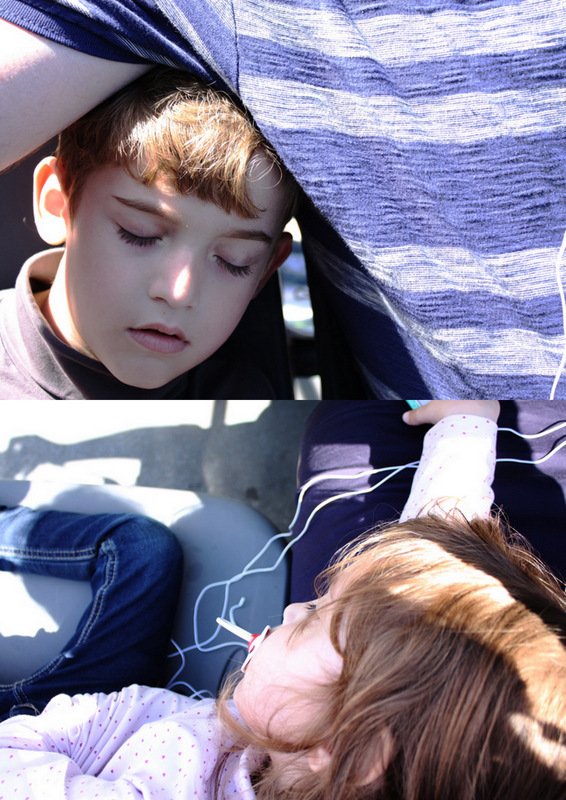
We arrived in Athens on a Sunday, around noon, after a short but nice trip from Larnaca. We went through immigration control pretty fast and found a taxi to take us to our hotel, in a beautiful ride that took us through the hills that surround the ancient city. The streets were quiet, with just a few people strolling quietly, sitting in parks, and many of them meditating and practicing yoga. From the windows of the car, we could spot a few dogs and cats here and there, a few open shops and some groups of tourists like us. But the most surprising thing of all was how at home my husband and I felt there, as if we had lived there before even though it was our first time in the city.
We checked into our hotel, left our luggage in the room and promptly climbed to the restaurant situated on the last floor, from where we knew we would be able to see the Acropolis.
It was stunning.
We had a few drinks, our jaws dropped at its beauty, and then went down to the hotel’s reception to see how far it was and how easily accessible it was to evaluate the feasibility of going with our children.
It turned out that it was pretty close by, and that the path to get there was a beautiful one, full of little shops and cafés, so we decided to give it a try. It was almost lunch time already by the time we left the hotel, so we figured that, if Luka and Zoe got too tired on the way there, we could always stop at one of the cute little restaurants, grab a bite and then continue. Or, if they were not feeling well by the time we finished lunch, we could always go back to the hotel and let them rest watching cartoons, or take a nap. In the end, this is what we ended up doing.
After they had taken a nap, we started looking for things to do, for a way to take at least a brief look at the city, but that wouldn’t push Luka and Zoe beyond their point of comfort. We wanted them to enjoy the sightseeing, not to struggle!
We were brainstorming ideas in our room, when I remembered seeing the double-deck tourist buses around Syntagma square. I went down to the reception and found a brochure with all stops, packed snacks and water for the children, and we left.
The bus stop was barely 200 meters from our hotel and, by the time we arrived, there was a bus there already. Luka and Zoe were very excited about travelling on the upper side, getting their headphones in their ears and being able to touch the tallest branches of the trees and the streets from above.
A few minutes after the bus began moving, however, the fell soundly asleep again!
The afternoon was sunny, and there was a lovely breeze that prevented the weather from getting too hot. The city felt quiet and relaxed, and it was really nice to be able to, at least, get a glimpse of it.
During the 90 minutes that the itinerary lasted, we saw Melina Merkouri, Plaka, the New Acropolis Museum, the Acropolis and Parthenon, the Temple of Zeus, the National Gardens, the Benaki Museum, Panathenaic Stadium, the National Library), the National Archaeological Museum, Omonoia Square, Karaiskaki Square, Thession Station, and Kotzia Square. We took pictures trying to avoid the heads of other passengers (a difficult task!), we chatted and we planned future trips.
By the time the bus tour was finished, we had already fell in love with the city, and decided to go back one day, to walk and walk and walk.
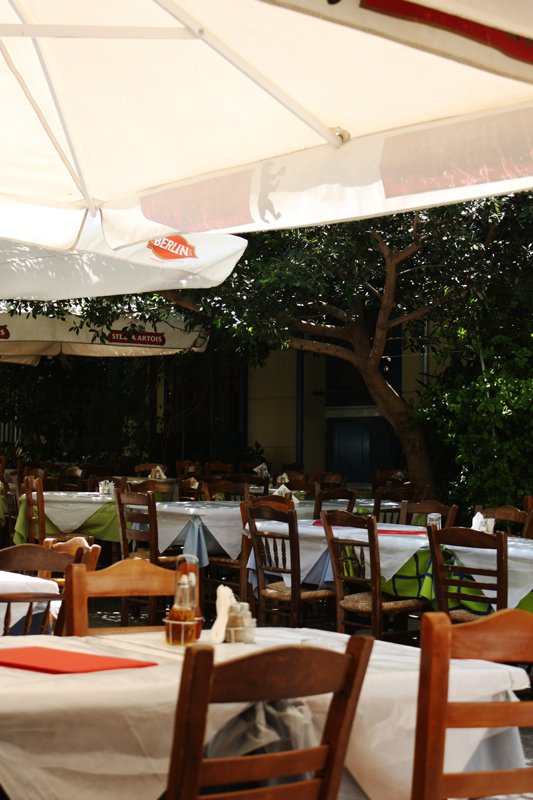
We took off the bus, treated Luka, Zoe and ourselves to a few scoops of delicious ice cream and went back to the hotel, where we later had dinner, watching the sun set over the city.
Early the following morning, we took our flight to Belgrade…but I’ll tell you about it in my next post!
Have you ever been to Athens? Would you like to?

by Marcela M. | Dec 19, 2012 | Blog, Europe, Travel
Good morning friends! I am publishing this post veeeeeeery late because I had problems all day with my internet connection, and I had my son at home, recovering from fever. But here I am!
Today’s post, corresponding to day 19 of the advent, is a small guide to holiday related activities in the city, and a shout out to artisans I know and love. If you have been reading this blog for a while, you may already know that I arrived to live in Nicosia on a 24th of December, so this season is a special one for me for many reasons. When I had just arrived I had absolutely no idea where to go or what to do, apart to our daily visits to Ikea to furnish our apartment, so in case you have just arrived or need a refresher or are looking for some original last minute gift, here’s some of what is going on in the city:
Activities:
1) Christmas markets: Every year, during the weekends of December and especially right before Christmas, there are ad-hoc markets selling different things, from baked goods to home made cards (and everything in between) at the beginning of Ledra street, frequently accompanied by chorus that sing carols. Dowtown shops are also open on Sundays and some street, such as Stasikratou, become pedestrian.
2) Gynaikobazaro or Women’s market at the end of Ledra street (near the crossing): This is a lovely initiative by My Shop, a vintage shop in the old town, which aims to bring back to life the traditional women’s markets, typical of Cyprus. It is an open air market, where (mostly) women sell their handcrafted goods and it is open on the first Saturday of every month, and twice in December. The next one will be next weekend, and it will open both on Saturday and Sunday.
3) Christmas charity concert at Holy Cross Catholic Church (Paphos gate): It will take place on December 21st and all proceeds will go to charity
4) Christmas activities at Ikea and the Mall of Cyprus: They take place every day during December, and they are varied: cookie offerings, fashion shows, magicians, etc. Great for rainy days 🙂
Artisans:
1) Victoria Vasiliou: She is an amazing artist, who makes découpage and knitted berry baby hats and shoes. The boxes above were made by her, for Zoe and Luka, when they turned 1 year old. I had seen her work at a baby shower and fell absolutely in love with it, so I immediately thought about her for making our children’s birthday present (in case you are wondering, they are “boxes to store love” and they have letters and greetings cards from loved ones who live near and far). Her wonderful taste and attention to detail are fantastic. She now lives in Pera Orinis, outside of Nicosia and can be contacted by email at victoria.vasiliou@yahoo.com.
2) Suga Belle Boutique. Haroulla is an artist and graphic designer who recently opened her etsy boutique, where she sells adorable and eco friendly handmade headbands, pouches and greeting cards. You can check her HERE.
3) For traditional Cyprus handcrafted items, visit the Cyprus Handicraft service. It is located in Athalassa Avenue 186, Strovolos and there you can not only buy goods, but also see the artisans at work in their workshops. Traditional items include pottery and lace work, among others.
In case you are wondering: No, I didn’t receive any money, goods or anything else in exchange for these recommendations, nor do I have an affiliate relation with any of the shops or artisans mentioned in this post. My opinions are entirely my own.
Do you like to shop artisanal products for the holidays and to visit Christmas markets?
by Marcela M. | Sep 27, 2012 | Blog, Europe, Travel, Uncategorized
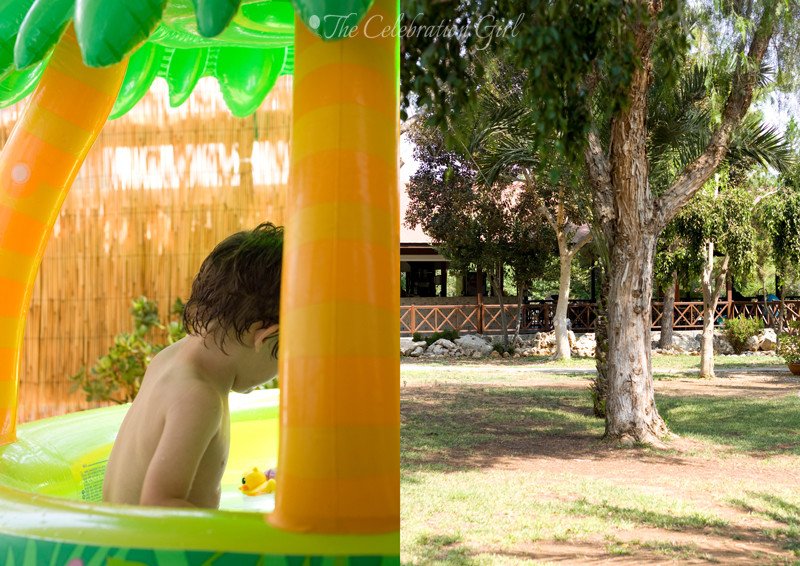
Autumn is here.
September is almost over and, while Summer is still lingering in Nicosia, some trees have started to lose their leaves, and, early in the mornings and when the sun sets at night, the air is fresh and a lovely, cool breeze signals the beginning of the new season.
I am, normally, an autumn-winter person. I thrive in cold weather, I love snow and even rain, and I have a hard time putting up with high temperatures. I have always looked forward to seeing the first yellow leaves appear in the trees, to getting cardigans and sweaters out of storage and to knowing that delicious apples and pears were going to fill the market stalls soon. But this year, something changed and it wasn’t my love for cold weather, which remains intact.
This year, perhaps for the first time, I also embraced Summer.
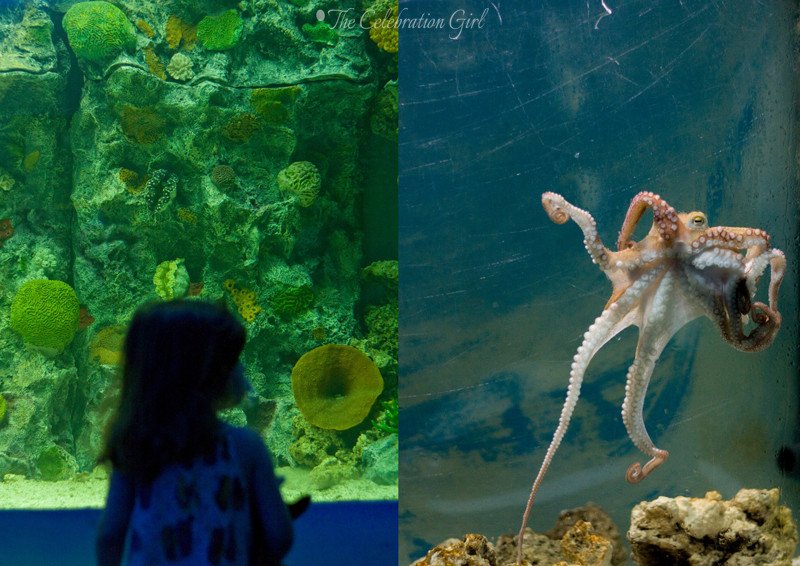
It may have been the fact that, for the past 7 years, I have been living in countries with warmer weather climates (first in Ivory Coast, and now in Cyprus), or it may have been the fact that this was the first year that Luka and Zoe went to school, so August felt like vacations and not just like “another hot month”. Or maybe it was because we didn’t travel and, as a consequence, we got to explore Nicosia and other parts of the island with fresh eyes, or perhaps because after a hard first half of the year (2012 has been a rough one so far), we now take every single opportunity to connect, cherish our family, and celebrate.
For whatever reason, this past Summer we slowed down, we unplugged from all the media paraphernalia, we looked around us and we made it a point to be present, to be mindful, and to take advantage of what we have, of where we live, of who we are. We wanted to make this a fun-filled summer, so I turned to Pinterest for inspiration. I had been collecting ideas for a while, and in August we put them to good use.
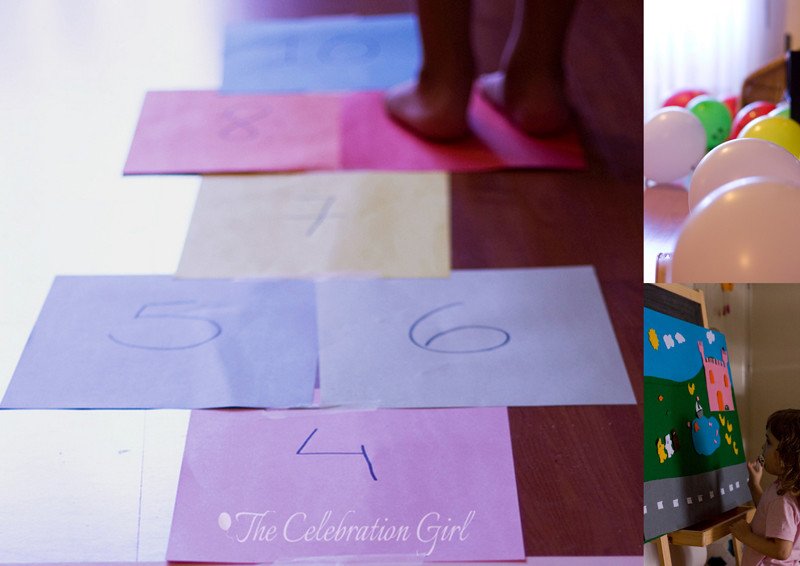
We wanted to have as much contact with nature as possible, so, at home, we planted spices to season our food. We also explored different parks and playgrounds daily, and took nature observation walks in the early hours of the morning, and then came back home to combat the heat in the paddling pool set up in the balcony. When it was too hot to get outside, we stayed indoors and spent our time doing arts and crafts. We played with clay and play-dough. We did collages and paper mobiles and hang them from the windows to twist and turn with the afternoon breeze.

We made Toilet Tube cars, filled the house with balloons for no reason at all, glued a paper hospcotch to the floor and spent days jumping on it. We made a felt board for telling stories and singing rhymes.
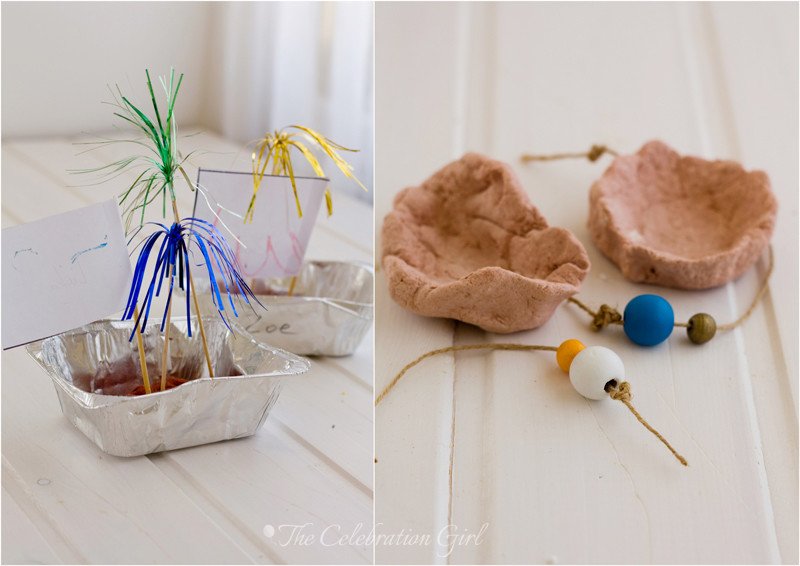
We read a lot, old and newly- discovered books, and we filled the ipod with readalong versions of our favourite stories.
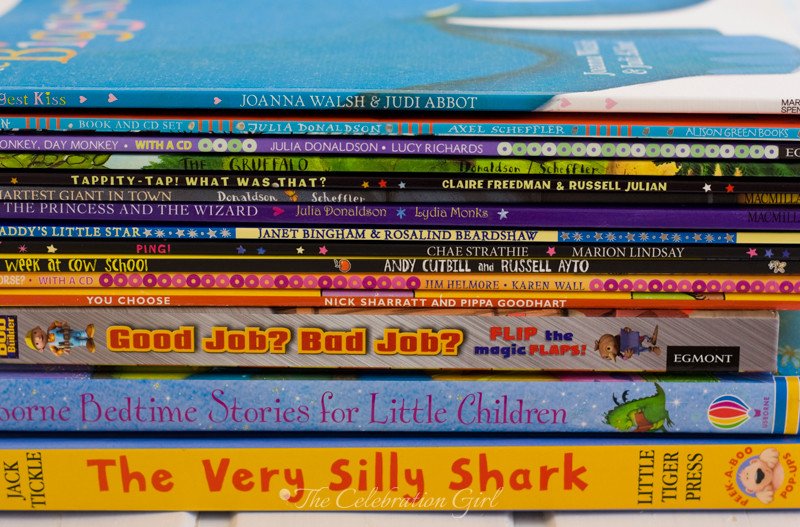
We brought books to life, with a little imagination. We made lots and lots of origami boats and made them race in the paddling pool with the power of our lungs. We made origami airplanes and spent entire afternoons making them fly all around the house.
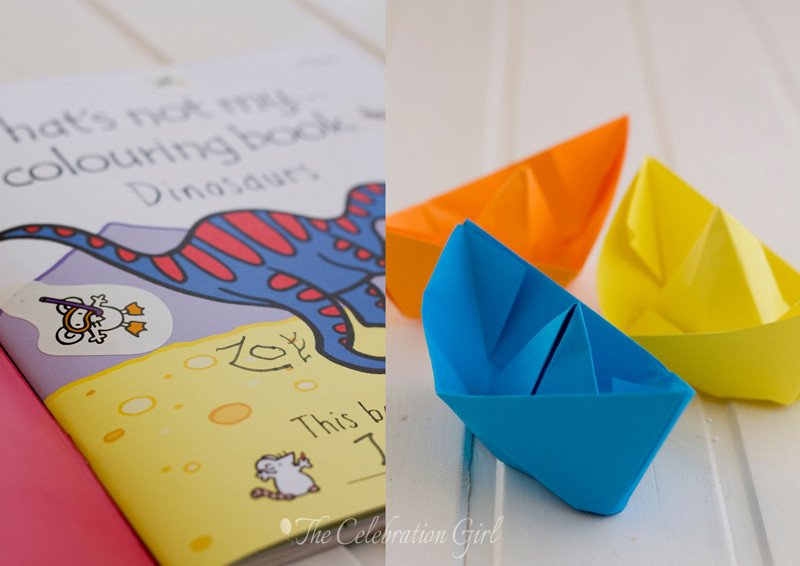
And Zoe wrote her name alone for the very first time!
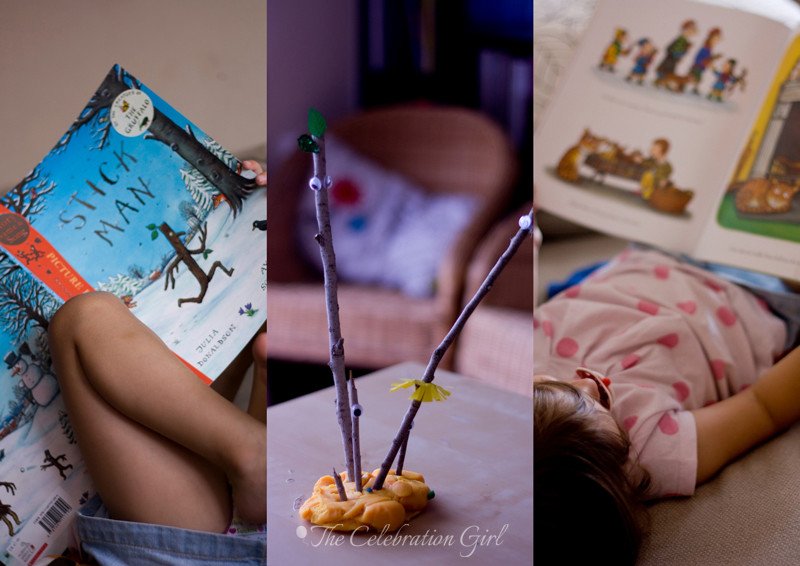
On weekends, we took day trips around the island. We visited the Protaras Aquarium, where we saw octopus, sharks, upside-down fish, penguins, pacus and many other species. We visited the Limassol Zoo, where we saw owls, monkeys, birds and even deers. We visited the Troodos Mountains and had lunch at a lovely, shaded restaurant, next to the calming sound of a stream of water where little geese and ducks were bathing.
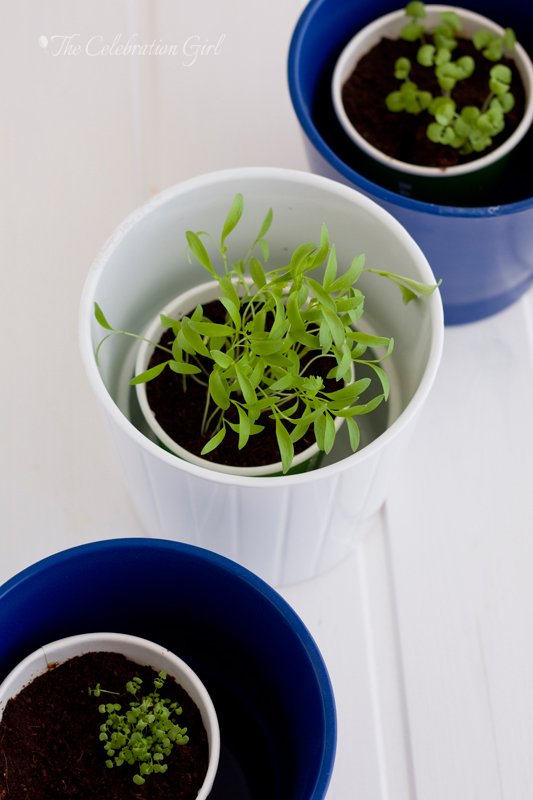
We spent a weekend at a hotel, by the beach, and it was wonderful. We bathed and sunbathed, we played and relaxed. We saw beautiful sunsets, and the most amazing dawns from our balcony, and it all felt as carefree, peaceful and joyful as Summer should.

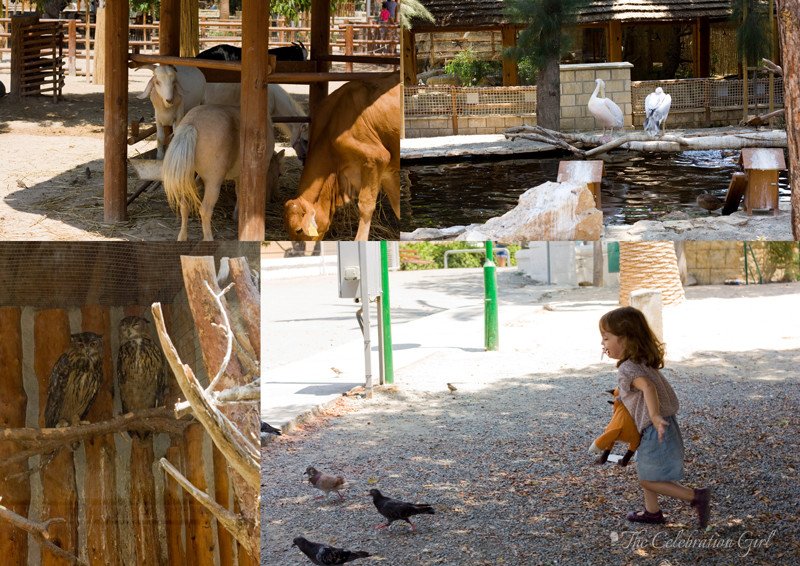
We celebrated Luka and Zoe’s birthday with not one, not two, but three cakes (each!). Yes, that’s right: one mini cake made from stacked cupcakes for the day of their birthday, one cake for each of them for a mini party at home (pictures in the next post!), and one cake for each to bring to school, to celebrate with their friends and classmates (these are cakes pictured below. Plain and simple on the outside, but with a surprise on the inside: They were rainbow cakes!).
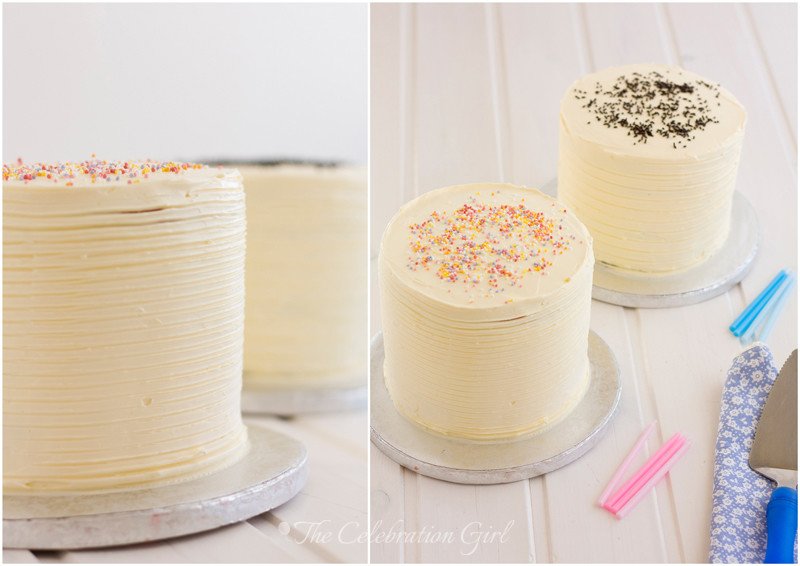
We didn’t bake much, because it was too hot to turn the oven on…but we made ice cream! And plenty of it!

At the beginning of August, we bought the KitchenAid’s ice cream attachment and began experimenting with flavours. I turned to the internet for recipes and I was not disappointed. We made David Lebovitz’ s vanilla bean ice cream (which is AMAZING), and chocolate ice cream, the famous one ingredient banana ice cream from The Kitchn (a wonderful guilt free treat!) , and an absolutely delicious vegan coconut chocolate ice cream. We also made Food and Cook’s chocolate popsicles and her yogurt and raspberries popsicles. My advice: try them all! And if you don’t have an ice cream maker, worry not, the recipes can be adapted (just let me know in the comments if you have any doubts about how to do it).

We enjoyed this Summer as Summers are meant to be enjoyed: fully. And now, as the last bits of ice cream disappear from our freezer, the weather slowly starts to get chillier and we start thinking about adding blankets to our beds, we are ready to fully embrace the colder days of Autumn.
I hope you all had a lovely Summer, or a cozy winter, depending on where you live, and I hope that you are all ready for the next season.
Have a wonderful week!

El otoño está aquí.
Septiembre casi llega a su fin y, aún cuando el verano aún se resiste a irse de Nicosia, algunos árboles ya han comenzado a perder sus hojas y, temprano por la mañana y al ponerse el sol, el aire ya está fresco y una adorable brisa señala el comienzo de la nueva estación.
Yo soy, en geneal, una persona otoñal. Me siento mejor en climas fríos, amo la nieve, y hasta la lluvia, y me cuesta terriblemente tolerar las altas temperaturas. Desde chica esperaba con ansias ver las primeras hojas amarillas aparecer en los árboles, el momento de sacar cardigans y sweaters de los baules y colocarlos en los placares (closets) y, sobre todo, ese saber que las manzanas y peras más deliciosas pronto llenarían los estantes de las fruterías. Pero este ano, algo cambió, y no fue mi amor por el frío, que sigue fuerte e intacto.
Este año,por primera vez, me entregué al verano, y lo aproveché sin desear que terminara.
Quizás haya sido porque hace siete años que vivo en climas cálidos (Costa de Marfil, primero, y ahora Chipre), quizás haya sido porque este fue el primer año que Luka y Zoe fueron a la escuela, entonces Agosto se transformó en sinónimo de vacaciones, y no tan sólo de otro mes caluroso. O quizás haya sido porque, como no salimos de viaje, aprovechamos al máximo la ciudad en que vivimos y exploramos la isla con nuevos ojos. O tal vez haya sido que, luego de una primera mitad del año complicada (2012 viene siendo un año duro), aprovechamos cada pequeña oportunidad para conectar, disfrutar de nuestra familia, y celebrar que estamos juntos.
Por el motivo que fuere, este verano que acaba de pasar decidimos desacelerar, desconectarnos de la parafernalia mediatica, mirar a nuestro alrededor y asegurarnos de estar presentes en nuestro aquí y ahora, de vivir concientemente, y disfrutar de aquello que tenemos, del lugar donde vivimos, y de todo lo que somos. Quisimos que este fuera un verano divertido, alegre, así que aprovechamos para poner en práctica todas las ideas que había estado recolectando en Pinterest desde hacía un tiempo.
Una de las cosas que queríamos era tener tanto contacto con la naturaleza como fuera posible, así que plantamos plantas aromáticas en el balcón y nos aseguramos de explorar distintos parques todos los días, y de hacer caminatas de observación de la naturaleza, todos los días, temprano por la mañana. Cuando el calor comenzaba a arreciar, volviamos a casa, disfrutabamos de la pileta plástica que colocamos en el balcón y, si se tornaba insoportable, entrábamos a casa a hacer arte y manualidades. Así pasamos las siestas jugando con plastilina y masilla, hicimos collages y móviles de papel que colgamos de la ventana para que la brisa de la tarde los hiciera volar y dar volteretas. Construimos autitos con tubos de papel higienico, llenamos la casa de globos por que sí, pegamos rayuelas en el piso y pasamos tardes enteras saltando en ellas. Creamos un cuadro de felpa y contamos historias y canciones con sus personajes.
Leimos mucho, libros viejos y nuevos, y llenamos el ipod de audio libros de nuestras historias favoritas y, con un poco de imaginación, dimos vida a nuestros libros. Hicimos barquitos de papel y los hicimos correr carreras con la fuerza de nuestros pulmones. Hicimos avioncitos de papel y pasamos tardes enteras haciendolos volar por toda la casa.¡ Y Zoe escribió su nombre por primera vez!
Durante los fines de semana, nos dedicamos a explorar la isla en viajecitos de un día. Visitamos el acuario de Protaras, donde vimos pulpos,tiburones, pinguinos, peces invertidos y pacus, entre otras especies. Fuimos al Zoológico de Limasol, donde vimos buhos, monos, pájaros diversos y hasta alces. Subimos a las montañas Troodos y almorzamos en un restaurant precioso, bajo las copas de los arboles, y delimitado por una corriente de agua fresca en la que se bañaban, contentos, patitos y gansos.
Pasamos un fin de semana en un hotel frente al mar, y fue maravilloso. Nos bañamos en la pileta (piscina), tomamos sol, jugamos y nos relajamos. Vimos atardeceres hermosos y amaneceres de ensueño, desde la calma de nuestro balcón y todo hizo que nos sintieramos tan tranquilos, relajados y felices como todos deberian poder sentirse en verano.
Celebramos el cumpleaños de Luka y Zoe con no una, no dos, sino tres tortas ¡cada uno!. Si, como lo leen: una mini torta de cupcakes el día de su cumple, una torta cada uno para la mini fiesta que hicimos en casa (fotos en el proximo post!) y una torta cada uno para llevar a la escuela, y así soplar las velitas con sus amigos y compañeros (estas son las tortas de la foto, que son muy simples y sencillas por fuera, pero con sorpresa adentro: son la famosa torta arco iris!)
No hicimos tortas ni cupcakes ni esas cosas que requieren horno porque hacía demasiado calor…pero hicimos muchos helados!
A comienzos de agosto compramos el accesorio helador de la KitchenAid y, a partir de entonces, comenzamos a experimentar y probar helados de distintos sabores. Busqué las recetas y la inspiración en blogs de confianza, y en internet, y la verdad es que no me decepcionaron. Hicimos dos helados de David Lebovitz, el de vaina de vainilla (INCREIBLE!) y el de chocolate (que tiene una textura de chocolate con leche), el helado de un banana de un solo ingrediente, the The Kitchn, y un helado vegano absolutamente delicioso, de chocolate y coco. Tambien probamos dos recetas de Food and Cook, el de palitos de chocolate y el de palitos de yogur y frambuesas. Mi recomendación: haganlos a todos! Y no se preocupen si no tienen máquina heladora, las recetas pueden adaptarse (si no saben cómo, dejenme un comentario en el post!)
La verdad es que disfrutamos de este verano como los veranos deben ser disfrutados: completamente. Y ahora que los últimos restos de helado comienzan a desaparecer de nuestro freezer, que el clima comienza, lentamente, a tornarse más fresco y que empezamos a pensar en agregar colchas a nuestras camas, ahora sí estamos listos para aprovechar cada minuto de los días fríos, del otoño.
Espero que ustedes hayan tenido también un verano hermoso, o un invierno cálido, dependiendo de dónde vivan, y espero que esten listos para vivir al máximo y disfrutar enormemente la nueva estación que apenas se asoma.
Que tengan una semana maravillosa!
by Marcela M. | Jul 21, 2012 | Blog, cookies, Recipe Box, Recipes, South America, Sweets, Travel, Uncategorized
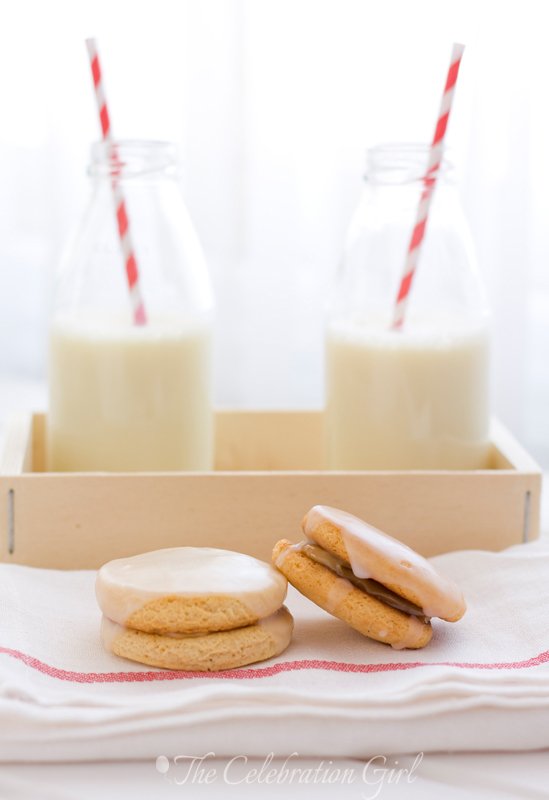
Good evening dear friends! I hope you are having a lovely weekend.
Days have been incredibly HOT in Nicosia this past week, with temperatures ranging from 40 to 45.5 degrees celsius. Summer is definitely here and this means doing our best to minimize as much as possible the heat that comes into the house. This is why we clean early in the morning, and then try to keep all window shutters down, to turn the stove on as little as possible and, you guessed it, we avoid baking! We tend to opt for meals that require minimal cooking, such as fresh salads, and, for dessert, we eat fruits and simple home-made fruit lollies.
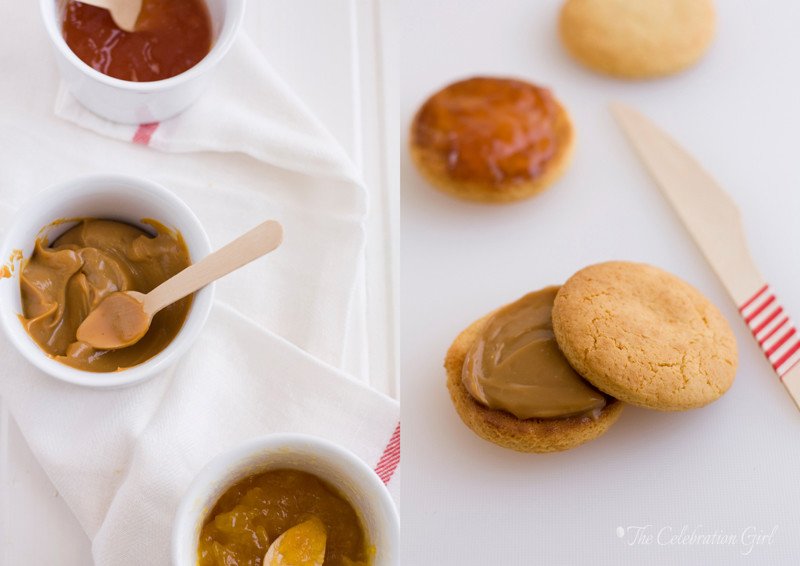
Sometimes, however, we do crave a little baked treat and, for those occasions, these alfajores are perfect: they are incredibly easy and they take only 5 to 7 minutes in the oven to be ready. After they have cooled down, they are sandwiched with fruit jam or dulce de leche and covered in the simplest glaze of all: icing sugar to which we just add a few tablespoons of boiling water and a sprinkle of lemon juice. They couldn’t be easier!

You may have noticed that I called these alfajores “semi cordobeses” , and there is a reason for that. I had been looking for a while for a recipe of the particular type of alfajores from my home city. I never had one because, when I lived there, I always bought them from a nearby store but, now that I live abroad and that I have children whom I would like to introduce to my culinary traditions, I wanted to be able to make them at home.
The search, however, proved to be difficult. It turns out that Argentina’s cocina criolla (créole cuisine) is famous for being “unreliable” or “moody”. Now, I honestly refuse to attribute human characteristics to any recipe and I believe, instead, that what happens is product of the typical way recipes are transmitted back home: as part of family heritage. Recipes are learned, first, by watching our elders prepare them at home and, later, by making them together with them when we are older. At my own home, for example, we rarely measured ingredients and recipes were rarely written down. We just knew how they were supposed to turn out and how to fix common problems, because we had been making them our whole life.
This reminds me of an anecdote from my grandmother. One day, back in 1997, I was about to leave Argentina for a few months when I realized that I had never written down some of her delicious staple recipes and that I would not necessarily remember how they were done because they were not everyday dishes. So I sat down with her, in her kitchen, armed with a notebook and a mate, and she started trying to explain to me how the recipes were done. Our dialogues went more or less like this:
Me: So, let’s see, “rosquitas“. What ingredients do they take?
Grandma Antonia: 6 eggs, 3 tablespoons of alcohol, 1/2 kilo of flour.
Me: And how do I make them?
Grandma Antonia: Just mix everything until you get a smooth dough. But if you feel that it turns out to be too dry, add another egg.
Me: (confused) But how do I know if the dough is too dry and I should add another egg or if I should just keep mixing??
Grandma Antonia: I don’t know! I just know!
Of course, we ended up making rosquitas together and I took many more notes than the ones initially provided by my grandmother. She knew so well how to make the recipe that it was hard for her to put herself in my shoes, or in the shoes of anyone who, well, just didn’t know everything that she did.
Most of the recipes I have from my home are like that. They mention “a drop of milk”, “a bit of flour”, or they get started with 100 grs of chocolate but then add unmeasured extra quantities of it as the preparation progresses, according to how we know the dish is supposed to turn out because we made it countless times before. This is perfectly okay when recipes are transmitted within families but it becomes a problem when one has never seen the dish being prepared before. People tend to transmit the initial ingredients and the basic procedures but, more often than not, they simply forget to pass down vital information that one only acquires when making the food with them. Then, of course, fiascos become very common!
Let me just tell you that I had many of those fiascos before achieving this recipe (which gave me a few headaches too!) and I still haven’t found a good one for our traditional colaciones. What’s more, I don’t think my search for the real alfajor cordobés is over yet. These are delicious cookies, the texture of which does resemble that of our traditional sweets…but the taste is not quite “it”, in my opinion, and that is the reason I called them “semi-cordobeses”. That being said, do try them, because they are really, really tasty!
Here is the recipe:
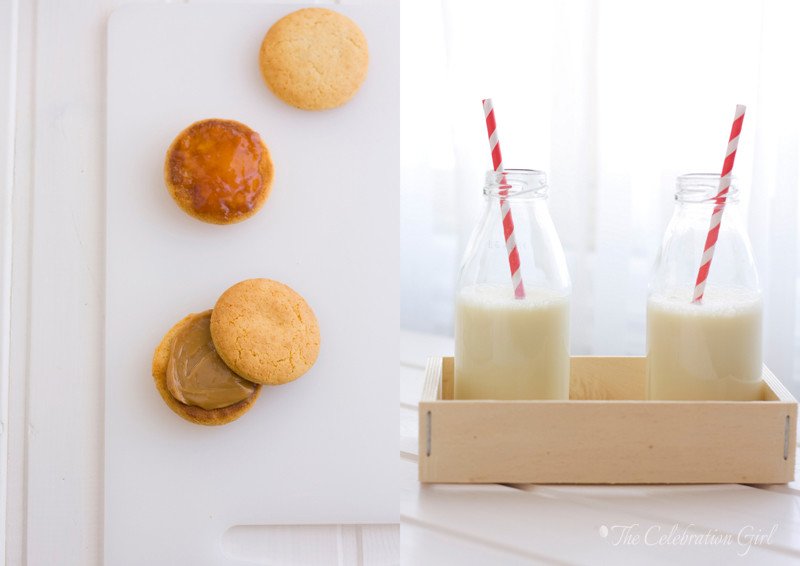
Ingredients (For 25 alfajores of 4 cms diameter/ 50 single cookies)
– 500 grs all purpose flour (0000)
– 10 grs amonium bicarbonate (or 12 grs sodium bicarbonate, which is less smelly)
-10 grs baking powder
– 120 grs soft butter or margarine
– 2 eggs (I used M)
– 200 grs sugar
– 50 grs honey
– 15 grs malt extract (I used barley malt extract, which I found in the organic food section of my local supermarket)
– Fruit jam of your choice or dulce de leche, for sandwiching the cookies. I used quince jam, apricot jam and dulce de leche, for more variety. Traditional jams are quince, apricot, apple and pear.
– 4 cups of icing sugar
– 1 tablespoon of lemon juice
– 3/4 cup of boiling water (or 12 tablespoons)
Preparation:
1) Mix flour, baking powder and bicabonate.
2) Pour flour mix on the kitchen counter and make a hole in the middle
3) Add butter, eggs, honey, malt extract and sugar in the hole. Start mixing the wet ingredients with your hands, and once this is done, start incorporating the flour, little by little, until you get a uniform dough.
4) Cover the dough in plastic wrap and put in the refrigerator for 20 minutes.
5) In the meantime, prepare your baking sheets by lining them with baking paper.
6) A few minutes before removing the dough from the refrigerator, preheat the oven to 250 degrees C (maximum)
7) Roll the dough 1/2 cm wide and cut circles using a cookie cutter. Place the circles on baking sheets and put them in the freezer for 5 minutes. NOTE: The cookies grow in the oven, so place them apart on the baking sheet or they will join one another. Also, do not skip the freezer part or they will lose their shape!
8) Bake in a hot oven for 5 to 7 minutes, until they barely begin to brown. Be careful, they brown easily!
9) Remove from the oven, transfer to a wire rack and let cool completely
10) Add one tablespoon of jam or dulce de leche to one cookie, and sandwich it by placing another one on top. Now you have an alfajor! Continue until all cookies have been sandwiched together.
11) Prepare the glaze by adding the boiling water and lemon juice to the icing sugar and mixing well, until no lumps remain.
12) Place the alfajores on a wire rack and pour the glaze over them. Let the glaze cool and harden, and eat.
You may store them in the freezer for up to 3 months. I hope you will like them!

Buenas noches queridos amigos! Espero que esten pasando un hermoso fin de semana!La semana pasada tuvimos unos días increíblemente calurosos en Nicosia, con temperaturas que iban de los 40 and los 45.5 grados centígrados. El verano se ha instalado aquí definitivamente y eso significa, para nosotros, hacer todos los esfuerzos posibles por minimizar la entrada de calor a la casa. Por este motivo, limpiamos bien temprano a la mañana y luego intentamos mantener todas las persianas bajas, cocinar lo menos posible y, se imaginarán, evitamos prender el horno! Así que optamos por comidas livianas, que requieran mínima cocción, como ensaladas frescas, muchas frutas y helados palito de fruta, bien simples.A veces, sin embargo, nos agarren esos ataques de algo dulce-dulce y, para estos casos, estos alfajores son perfectos: son increiblemente fáciles de hacer y sólo requieren 5 a 7 minutos de horno. Una vez que estan cocidos y ya se han enfriado, se los une con mermelada de frutas o dulce de leche y se los cubre con el baño más sencillo que existe: azucar impalpable a la que se le agrega agua hirviendo y un poquito de limón. No pueden ser más sencillos!Seguramente habrán notado que llamé a estos alfajores
semi cordobeses y esto tiene una razón de ser. Hace ya bastante venía buscando una buena receta de los alfajores tradicionales de mi terruño (
de los que hablé en este post). Cuando vivía en Argentina nunca los hice porque, en caso de antojo, no tenia más que ir al kiosco a comprar uno, pero ahora que vivo en el exterior y que quiero transmitirle a mis hijos mis tradiciones culinarias, comencé a querer poder hacerlos en casa.
La búsqueda, sin embargo, no fue sencilla. Descubrí, entre otras cosas, que la cocina criolla tiene fama de “poco confiable” “traicionera” o “temperamental”. Ahora bien, honestamente me niego rotundamente a asignarle a una comida caracteristicas humanas y creo que lo que en realidad ocurre, que el motivo por el que las recetas “no siempre salen bien”es otro, y está ligado a la forma en que se transmiten las recetas: como parte del acervo familiar de cada uno. Las recetas no se escriben, se aprenden mirando a nuestros mayores, cuando somos chicos, y haciéndolas con ellos, cuando crecemos. En mi casa, por ejemplo, rara vez mediamos ingredientes meticulosamente, ni escribiamos instrucciones detalladas. Simplemente
sabíamos cómo debía quedar el plato y cómo solucionar posibles problemas, porque lo veníamos haciendo toda nuestra vida.
Escribo estas líneas y recuerdo una anecdota, muy ilustrativa, que involucra a mi abuela. Un día, allá por el año 1997, días antes de que yo fuera a partir de Argentina por unos meses, caí en la cuenta de que nunca había anotado algunas de aquellas deliciosas recetas que mi abuela no hacía tan frecuentemente y que, por lo tanto, yo no conocía de memoria. Así que me senté con ella en la cocina de su casa, con un cuadernito que aún conservo, y una pava de mate, a intentar que ella me explicara su recetario personal. Nuestros dialogos terminaron siendo algo más o menos asi:
Yo: Bueno, a ver, rosquitas. ¿Qué ingredientes llevan?
Abuela Antonia: 6 huevos, 3 cucharadas de alcohol, 1/2 kilo de harina
Yo: Y como las hago?
Abuela Antonia: Mezclá todo hasta que te quede una masa suave. Pero si ves que la masa está muy seca, agregá un huevo
Yo: (confundida)…pero cómo sé si la masa está seca como para agregarle un huevo o si sólo tengo que seguir trabajandola
Abuela Antonia: ah, no sé! Yo sólo sé!
Obviamente terminamos haciendo las rosquitas juntas y en ese momento tomé muchisimas más notas para complementar las instrucciones iniciales dadas por mi abuela. Ella conocía tan bien cómo hacer la receta que le resultaba dificil ponerse en mi lugar, o sea, en el lugar de una persona que no supiera aquello que ella sabía tan a la perfección.
La mayoría de las recetas que traigo de casa son así. Hablan de “un chorrito de leche”, “un poquito de harina” o mencionan 100 grs de chocolate, pero no cuentan todos esos “poquitos extra” que se van agregando durante la preparación, conforme cómo el plato “debe quedar”. Esto funciona de maravillas con las recetas familiares, porque uno las conoce de memoria y no necesita una receta detallada, pero se transforma en un problema para alguien que nunca hizo el plato antes. La gente tiende a transmitir sólo los ingredientes iniciales y los procedimientos básicos, olvidando transmitir tambien, la mayor parte de las veces, aquellos datos extra que son vitales para obtener un buen resultado. Y en esos casos, claro, los fiascos son momumentales y uno se queda mirando el horroroso resultado final y preguntándose qué habrá ocurrido.
Dejenme decirles que, en la busqueda de esta receta he tenido muchos de esos fiascos, que, aun esta receta misma me dio varios dolores de cabeza al comienzo, hasta que logré “rellenar los espacios vacíos”, y que aún no logro dar con una buena receta de colaciones. Y más aún, todavía no considero que mi búsqueda del perfecto alfajor cordobés haya culminado. Estos alfajorcitos son deliciosos, y tienen una textura muy similar…pero el gusto no es exactamente el del alfajor cordobés tradicional, en mi opinión, y es por este preciso motivo que los llamé “semi-cordobeses”. Dicho esto tambien les digo que no dejen de probarlos porque son realmente muy, muy ricos!
Aquí está la receta:
Ingredientes
– 500 grs de harina cuatro ceros
– 10 grs de bicarbonato de amonio o 12 grs de bicarbonato sódico ( que es menos oloroso)
– 10 grs de polvo de hornear
– 120 grs de margarina o manteca
– 2 huevos
– 200 grs de azucar
– 50 grs de miel
– 15 grs de extracto de malta
– mermelada de frutas o dulce de leche para unir las tapitas. Yo usé mermelada de membrillo, de damascos y dulce de leche. Las mermeladas tradicionales son membrillo, damascos, pera y manzana.
– 4 tazas de azucar impalplable
– 3/4 taza de agua hirviendo
– 1 cucharada de jugo de limón
Preparación:
1) Mezcle la harina con el polvo de hornear y el bicarbonato
2) Coloque la harina sobre la mesada en forma de corona (haciendo un huevo en el medio)
3) Agregue, en el hueco mencionado, la manteca o margarina, los huevos, el azucar, la miel, y el extracto de malta. Mezcle los ingredientes húmedos con las manos y, una vez incorporados, comience a agregar de a poco el harina, moviendola hacia el centro en pequeñas cantidades, hasta formar una masa uniforme.
4) Cubra el bollo de masa con papel film y lleve a la heladera por 20 minutos.
5) Mientras tanto, prepare las placas para horno recubriendolas con papel de hornear (antiadherente).
6)Unos minutos antes de sacar la masa de la heladera, precaliente el horno a maximo/250C
7) Saque la masa de la heladera y estirela con palote de amasar hasta que tenga un ancho de 1/2 cm. Corte circulos de aproximadamente 4 cms de diametro, coloquelos sobre la placa y lleve la placa al freezer por 5 minutos. NOTA: las tapitas crecen en el horno, asi que coloquelas suficientemente separadas la una de la otra o se unirán al cocerlas. Asimismo, no omita ponerlas en el freezer o perderan la forma!
8) Cocine las tapitas en horno fuerte por 5 a 7 minutos, hasta que esten apenas doradas. Tenga cuidado, se doran muy rápido, vigílelas!
9)Retire del horno, transfiera a una rejilla, y deje enfriar totalmente.
10) Una vez que las tapitas estén frias, unte la mitad con una cucharada de la mermelada/dulce de su elección, y cierrelas con las tapitas restantes, haciendo un sandwich. Una vez haga esto, usted tendrá en sus manos alfajores!
11) Prepare el baño de azucar agregando el agua hirviendo y el limon al azucar impalpable y revolviendo bien hasta que no queden grumos.
12) Coloque los alfajores sobre una rejilla y cubralos con el baño de azucar. Deje que el baño se seque y endurezca y disfrute!
Pueden guardarlos en el freezer por 3 meses. Espero que les gusten!

Have a wonderful weekend and a great start of the new week!


































